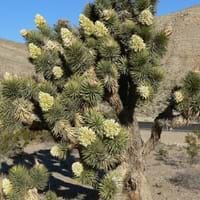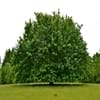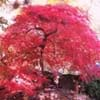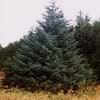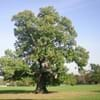Life Span
Perennial
Perennial
Type
Tree
Cactus or Succulent, Tree
Origin
Western United States, Northwestern United States, California, Canada
Southwestern United States, Mexico
Types
Black Maple, Mountain Maple,
Norway Maple
Not Available
Habitat
Riverbanks, Stream side
Desert, Dry areas, Rocky areas, Sandy areas
USDA Hardiness Zone
5-9
6-10
Sunset Zone
4, 5, 6, 7, 8, 9, 10, 11, 12, 13, 14, 15, 16, 17
9, 10, 11, 12, 13, 14, 15, 16, 18, 19, 20, 21, 22, 23
Habit
Oval or Rounded
Upright/Erect
Flower Color
Yellow, Red, Green
White, Ivory
Flower Color Modifier
Bicolor
Not Available
Fruit Color
Yellow, Red, Green, Sandy Brown
Light Green
Leaf Color in Spring
Light Green, Yellow green
Gray Green, Dark Green
Leaf Color in Summer
Green
Gray Green, Dark Green
Leaf Color in Fall
Gold
Gray Green, Dark Green
Leaf Color in Winter
Not Available
Olive, Gray Green, Dark Green
Leaf Shape
Irregular
Linear
Plant Season
Spring, Summer, Fall
Spring, Summer, Fall, Winter
Sunlight
Partial Sun, Partial shade
Full Sun
Growth Rate
Fast
Very Slow
Type of Soil
Clay, Loam, Sand
Loam, Sand
The pH of Soil
Acidic, Neutral, Alkaline
Acidic, Neutral, Alkaline
Soil Drainage
Average
Well drained
Bloom Time
Early Spring, Spring
Early Spring, Spring, Late Winter
Tolerances
Not Available
Drought
Where to Plant?
Ground
Ground
How to Plant?
Seedlings
Leaf Cutting, Stem Cutting
Plant Maintenance
Medium
Medium
Watering Requirements
Do not let dry out between waterings, Keep ground moist, Requires regular watering
Allow soil to be completely dry in between waterings, Do not water frequently
In Summer
Lots of watering
Lots of watering
In Spring
Moderate
Moderate
In Winter
Average Water
Average Water
Soil pH
Acidic, Neutral, Alkaline
Acidic, Neutral, Alkaline
Soil Type
Clay, Loam, Sand
Loam, Sand
Soil Drainage Capacity
Average
Well drained
Sun Exposure
Partial Sun, Partial shade
Full Sun
Pruning
Remove branches, Remove damaged leaves, Remove dead branches, Remove dead leaves, Remove dead or diseased plant parts
Remove damaged leaves, Remove dead branches, Remove dead leaves
Fertilizers
All-Purpose Liquid Fertilizer, Nitrogen
All-Purpose Liquid Fertilizer, No fertilizers needed
Pests and Diseases
Red blotch
Brown Spots, Red blotch
Plant Tolerance
Not Available
Drought, Dry Conditions, Dry soil, Heat Tolerance, Rocky Soil, Sun
Flower Petal Number
Single
Single
Foliage Texture
Coarse
Bold
Foliage Sheen
Matte
Matte
Attracts
Bees, Birds, Flying insects, Insects
Not Available
Allergy
Pollen
Not Available
Aesthetic Uses
Not Available
Decorating walls
Beauty Benefits
Improve hair condition
Not Available
Environmental Uses
Air purification, Nesting sites for birds, Shadow Tree, Wildlife
Air purification
Medicinal Uses
Tonic, tuberculosis
Not Available
Part of Plant Used
Flowers, Sap, Tree trunks
Not Available
Other Uses
Application in Furniture, Basketary, Can be made into a herbal tea, Decorative veneers, flooring, paneling, Edible syrup, Fibre, Making piano frames, Used as firewood, Used as fuel, Used in salads
Not Available
Used As Indoor Plant
No
No
Used As Outdoor Plant
Yes
Yes
Garden Design
Feature Plant, Shade Trees
Feature Plant, Rock Garden, Wall
Botanical Name
ACER macrophyllum
YUCCA brevifolia
Common Name
Big-leaf Maple, Oregon Maple, Pacific Maple
yucca palm
tree yucca
palm tree yucca
In Hindi
बड़ा पत्ता मेपल के पेड़
Joshua Tree
In German
Big Blatt Ahornbaum
Joshua Tree
In French
Grande feuille Érable
Joshua Tree
In Spanish
Gran hoja del árbol de arce
Árbol de Joshua
In Greek
δέντρο Maple μεγάλο φύλλο
Joshua Tree
In Portuguese
Árvore de bordo Folha grande
Joshua Tree
In Polish
Duży liść klonowy
Joshua Tree
In Latin
Big Maple folia ligni
Joshua ligno
Phylum
Magnoliophyta
Tracheophyta
Class
Magnoliopsida
Magnoliopsida
Order
Sapindales
Asparagales
Family
Aceraceae
Agavaceae
Clade
Angiosperms, Eudicots, Rosids
Angiosperms, Monocots
Tribe
Not Available
Not Available
Subfamily
Not Available
Not Available
Season and Care of Big leaf Maple and Joshua Tree
Season and care of Big leaf Maple and Joshua Tree is important to know. While considering everything about Big leaf Maple and Joshua Tree Care, growing season is an essential factor. Big leaf Maple season is Spring, Summer and Fall and Joshua Tree season is Spring, Summer and Fall. The type of soil for Big leaf Maple is Clay, Loam, Sand and for Joshua Tree is Loam, Sand while the PH of soil for Big leaf Maple is Acidic, Neutral, Alkaline and for Joshua Tree is Acidic, Neutral, Alkaline.
Big leaf Maple and Joshua Tree Physical Information
Big leaf Maple and Joshua Tree physical information is very important for comparison. Big leaf Maple height is 3,048.00 cm and width 120.00 cm whereas Joshua Tree height is 610.00 cm and width 300.00 cm. The color specification of Big leaf Maple and Joshua Tree are as follows:
Big leaf Maple flower color: Yellow, Red and Green
Big leaf Maple leaf color: Light Green and Yellow green
Joshua Tree flower color: White and Ivory
- Joshua Tree leaf color: Gray Green and Dark Green
Care of Big leaf Maple and Joshua Tree
Care of Big leaf Maple and Joshua Tree include pruning, fertilizers, watering etc. Big leaf Maple pruning is done Remove branches, Remove damaged leaves, Remove dead branches, Remove dead leaves and Remove dead or diseased plant parts and Joshua Tree pruning is done Remove damaged leaves, Remove dead branches and Remove dead leaves. In summer Big leaf Maple needs Lots of watering and in winter, it needs Average Water. Whereas, in summer Joshua Tree needs Lots of watering and in winter, it needs Average Water.

